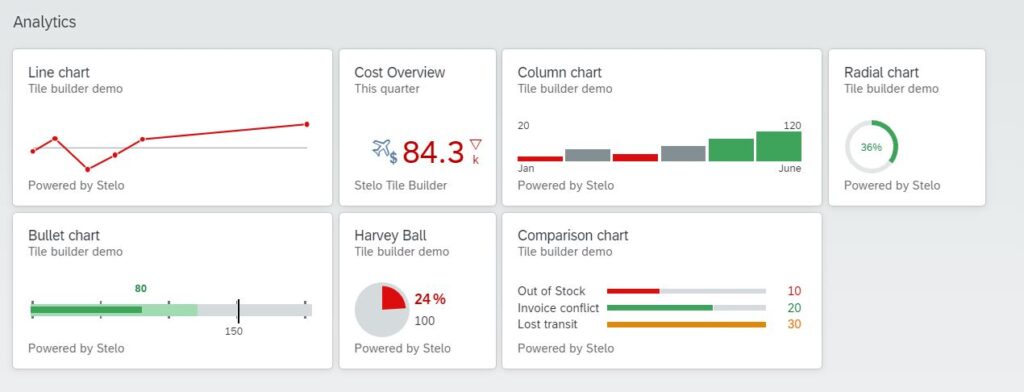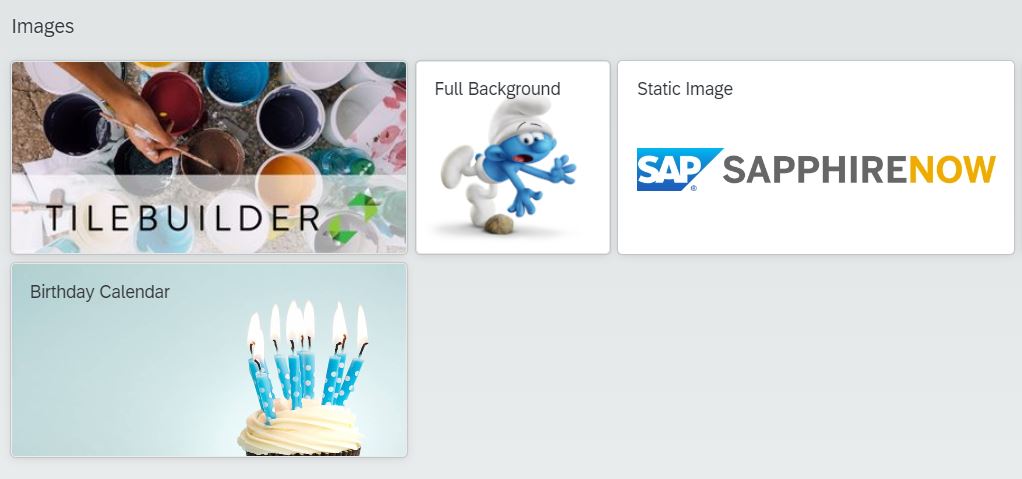Turn Fiori LaunchPad into a Dashboard for INCREDIBLE Results!
Reading time: 5 mins
Key Takeaways
SAP's navigation has evolved from transaction codes to a more visual, user-friendly interface with the introduction of Fiori LaunchPad and tiles.
Fiori LaunchPad allows for personalized, dynamic dashboards that integrate real-time data, enabling users to make informed decisions directly from their homepage.
Tools like Tilebuilder enhance Fiori LaunchPad by turning standard tiles into dynamic, data-driven elements, transforming user workflows and improving efficiency.
Provide enormous value to users at a glance by using analytics and graphics within Fiori LaunchPad.
In this article we discuss navigation using Fiori LaunchPad, the benefits of Dashboards, and how to add Dashboard functionality to Fiori LaunchPad using Tilebuilder.
SAP Navigation: A short history!
Most users of SAP’s ERP software use a very small fraction of the available functionality.
Back in 1980s and early 1990s, users of SAP R/2 and SAP R/3 relied upon transaction codes to navigate to the specific programs or reports they needed. Many had a printed sheet of transaction codes, but most could easily remember the transactions they needed each day.

The unbridled joy of finding ‘/nex’ in 1996
Explore related questions
With SAP R/3 came menu-driven navigation. Lots of users found this a slower way to navigate, but it was transformational in being able to see the available functionality and try out reports.
There was one menu to launch transactions, and an additional menu within each transaction to jump to utilities or additional functionality.

Menu-driven navigation
Fiori LaunchPad changed navigation away from a menu and towards tiles and links.
This makes a lot of sense for users who don’t access many transactions / apps. However, for other users the tiles take up a lot more real estate on the screen, so fewer transaction links can be displayed.
Enabling personalisation of the LaunchPad is essential such that users can arrange the tiles to match their own needs.

Fiori LaunchPad tiles and links
The introduction of ‘Spaces’ provided much better navigation for users who can access lots of different transactions/apps, through the introduction of a menu to reach pages of tiles.

Managing tiles using Fiori Spaces
It’s not all about Navigation
The vast majority of the SAP-delivered tiles contain a text and an icon, but some contain data, which can take the form of a ‘KPI’ tile, which adds a number, unit and a direction arrow, or analytics tiles which contain ‘microcharts’.
The data is regularly updated so users can very easily track important information without opening a separate dashboard or analytics application.
In this way, elements of a ‘dashboard’ are brought inside Fiori LaunchPad, which means that the LaunchPad becomes much more than a navigation tool.

Some SAP-delivered tiles contain KPI and chart data.
What Is a Dashboard?
A dashboard provides a graphical view of key performance indicators (KPIs) and other information that each user needs to perform their role. Like a car’s dashboard, data dashboards organize and present information from multiple sources in one location, in real time.
The goal of a dashboard is to help users quickly understand key business information. This clear view into relevant business data can help teams track performance, set benchmarks, identify hidden trends, drill down deep into data, make comparisons and more.
In addition, dashboards often include links to useful tools, such as calendars and to-do-lists. Dashboards need to be tailored by team/role, and ideally personalised by each user, so that the each user sees the information they need clearly and easily.
What’s the value of a dashboard?
Changing User Priorities
The number 1 goal of a dashboard should be to direct user actions, which means changing their priorities.
Giving data to users enables them to:
- Identify issues and urgent tasks.
- Identify trends.
- See progress against KPIs.
Based on the above, users make different priorities. This means that they do work differently – instead of working through an Inbox, they can address the most urgent tasks.
This means, in turn, that:
- Processes become more efficient, leading to lower costs and higher returns.
- Potential issues are address earlier and more quickly, resulting in better customer service.
- Users feel much more informed and in control, given them confidence to make decisions.
So this is transformational and highly valuable.
There is a plethora of other benefits for organisations to derive from dashboards:
- Data Quality. Provide ability to find bad data and clean it up.
- Decision Making. Allow decision makers to have all data so that all decisions are data driven.
- Decision Impact. Visualize and trend performance to understand the impact of decisions.
- Standardised Reporting. Provide a single source of truth for the organisation.
- Communication. Enable the conversation to be about real-time priorities and data trends.
- Efficiency. No need to run reports or build ad hoc reports.
- Productivity. High visibility of progress against targets/KPIs drives user behaviour.
- Understanding. Users learn more about how their actions impact business performance.
- Accountability. Teams and users can take responsibility for performance data that is shared and visible.
Why Fiori LaunchPad is so important
A dashboard gives real-time information to user to take action on: The purpose is to direct their behaviour.
Consider driving a car: The dashboard is a fundamental tool, aiding the driver. It’s not a reporting tool that the driver looks at before the journey starts or after the journey ends.
Building dashboards in SAP Analytics Cloud, on Fiori Overview Pages, Signavio or PowerBI provides valuable insights, but it’s like keeping the dashboard in the boot of the car if the user isn’t using the tool to perform their job.
The only place to provide a dashboard with real and obvious value is through Fiori LaunchPad, so that users are presented with the information all the time, rather than having to open up a separate analytics application.
Introducing Tilebuilder
Tilebuilder is an add-on product to SAP S/4HANA or ECC, which enables the easy design of dynamic tiles to turn Fiori LaunchPad into a dashboard.
The tiles are easily configured with no code, and linked to simple ABAP function modules to provide the dynamic data.
Every element of the tile can be driven dynamically using back-end logic, so colours and backgrounds can be changed to alert users.
With Tilebuilder you can replace standard tiles with dynamic tiles, showing graphical KPI data.
The tiles can link to any Fiori app: This may be an analytics app or any other app for users to take action.

You can also add images to tiles, to make them more engaging. Optionally, the images can be determined dynamically using back-end logic.
Again, the tiles can launch any Fiori app or external URL.

Where Tilebuilder adds real value
The way we design the user experience and the supporting SAP technical Roles has changed with SAP S/4HANA.
Fiori LaunchPad is an enormously powerful tool for delivering tangible business benefits, but care needs to be taken in the design.
Whereas in the past, the design of SAP roles was a technical SAP Basis task, the LaunchPad design must now be more than the grouping of functions needed for a business role.
The value lies in changing how users perform their work. So rather than running reports or working through Inboxes, they should be presented with information on priorities from the get-go.
It’s not possible to include all the functionality of Fiori Overview Pages in the LaunchPad, so some users should see an Overview Page as their ‘home’, and work from there. Other users’ experience can be improved by the introduction of dashboard functionality into the LaunchPad pages.
Tilebuilder enables you to transform any or every Fiori LaunchPad tile, which can be done as part of an initial design, or by slow increments, delivering continuous improvement. This enables organisations to change users’ priorities and behaviours, providing greater efficiency, faster issue resolution, and better decisions.



